Find out how to cut a pomegranate in this short and easy-to-follow tutorial! Once it’s opened, add the juicy, ruby-red jewels to sweet and savory recipes like salads, yogurt bowls, ice cream, cocktails, and more!
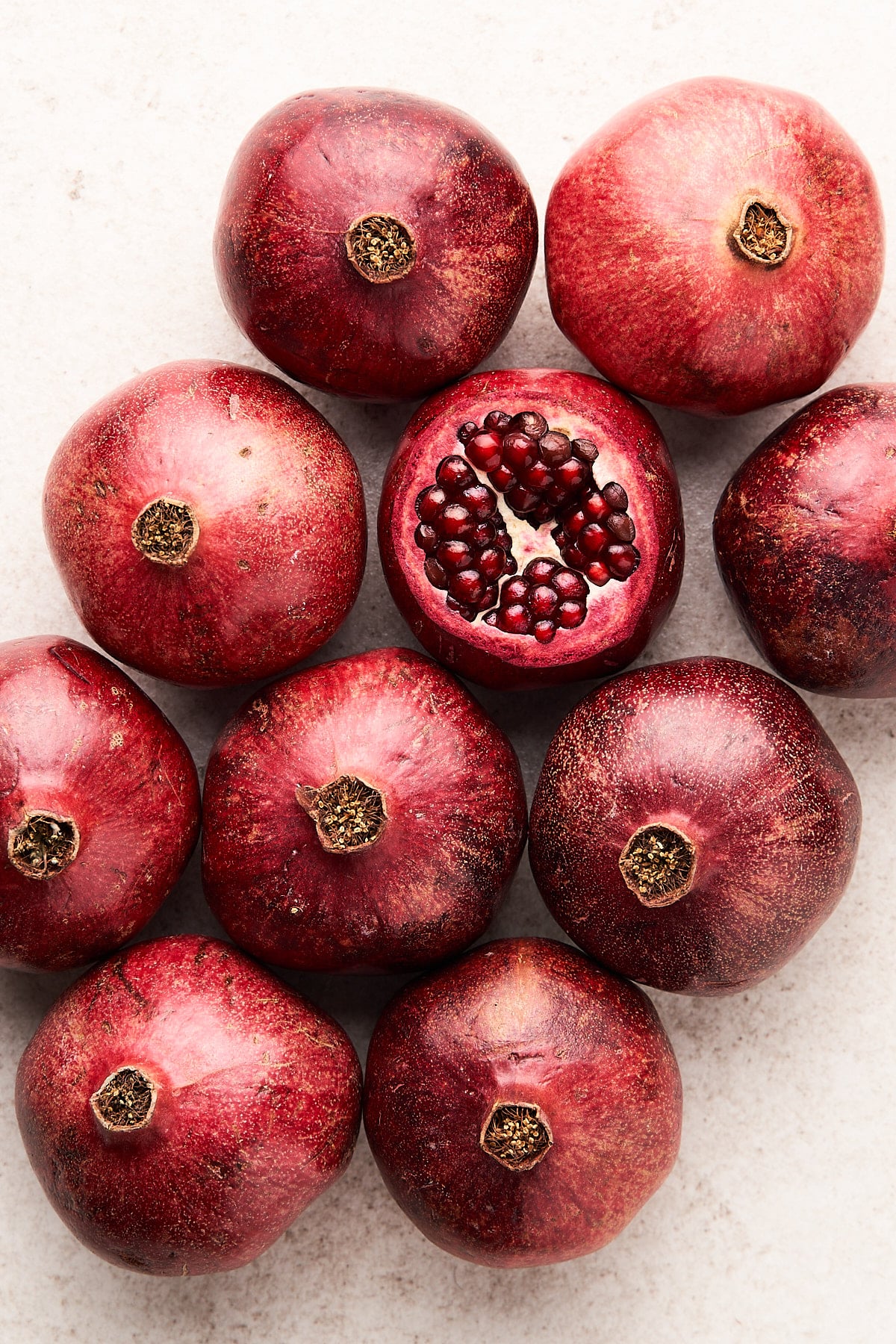
What are pomegranates?
Pomegranates grow on shrub-like trees, which are about the same size are orange trees. Inside, each fruit contains hundreds of juice-surrounded seeds, also known as arils, that are about the size of corn kernels. The seeds are enclosed by a white pulp known as a mesocarp.
I don’t know about you, but I’m a huge pomegranate fan! They’re vibrant, full of flavor, and perfect for all kinds of recipes (plus, pomegranates are full of healthy antioxidants!). But, learning how to cut a pomegranate for the first time can mean juice splatters, seeds flying everywhere, and stained clothes.
Well, not anymore! This guide is going to show you everything you need to know to cut a pomegranate like a pro!
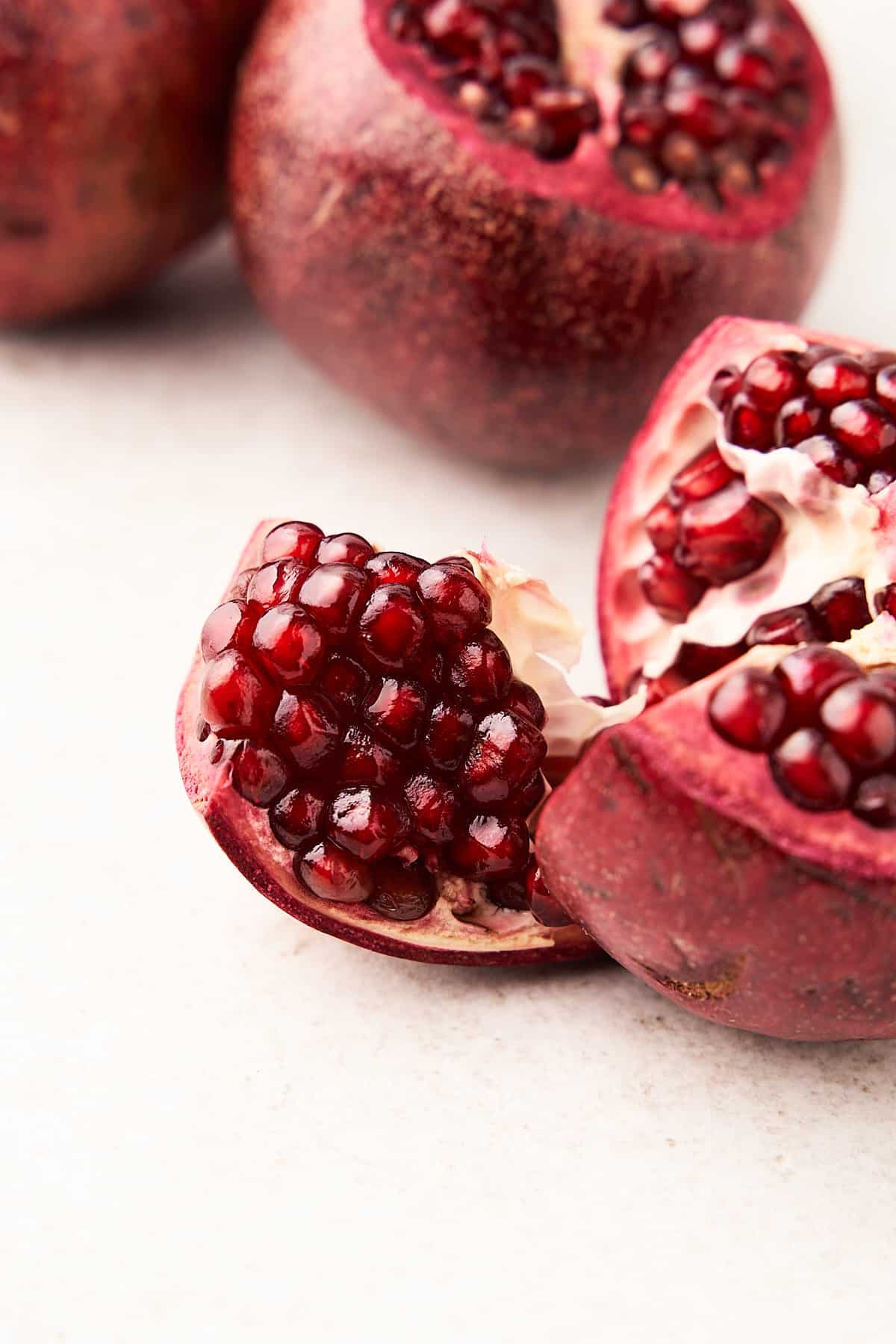
How to cut a pomegranate
While it may seem intimidating to cut, pomegranates are actually one of the easiest fruits to get into! You will need a sharp paring or utility knife, a bowl, and a mesh strainer. Keep reading for tips on how to cut a pomegranate.
Remove the top
Hold the pomegranate in the palm of your hand with the blossom end facing up. With a paring knife, make a shallow cut, about ½-inch below the top, in a circular motion all the way around.
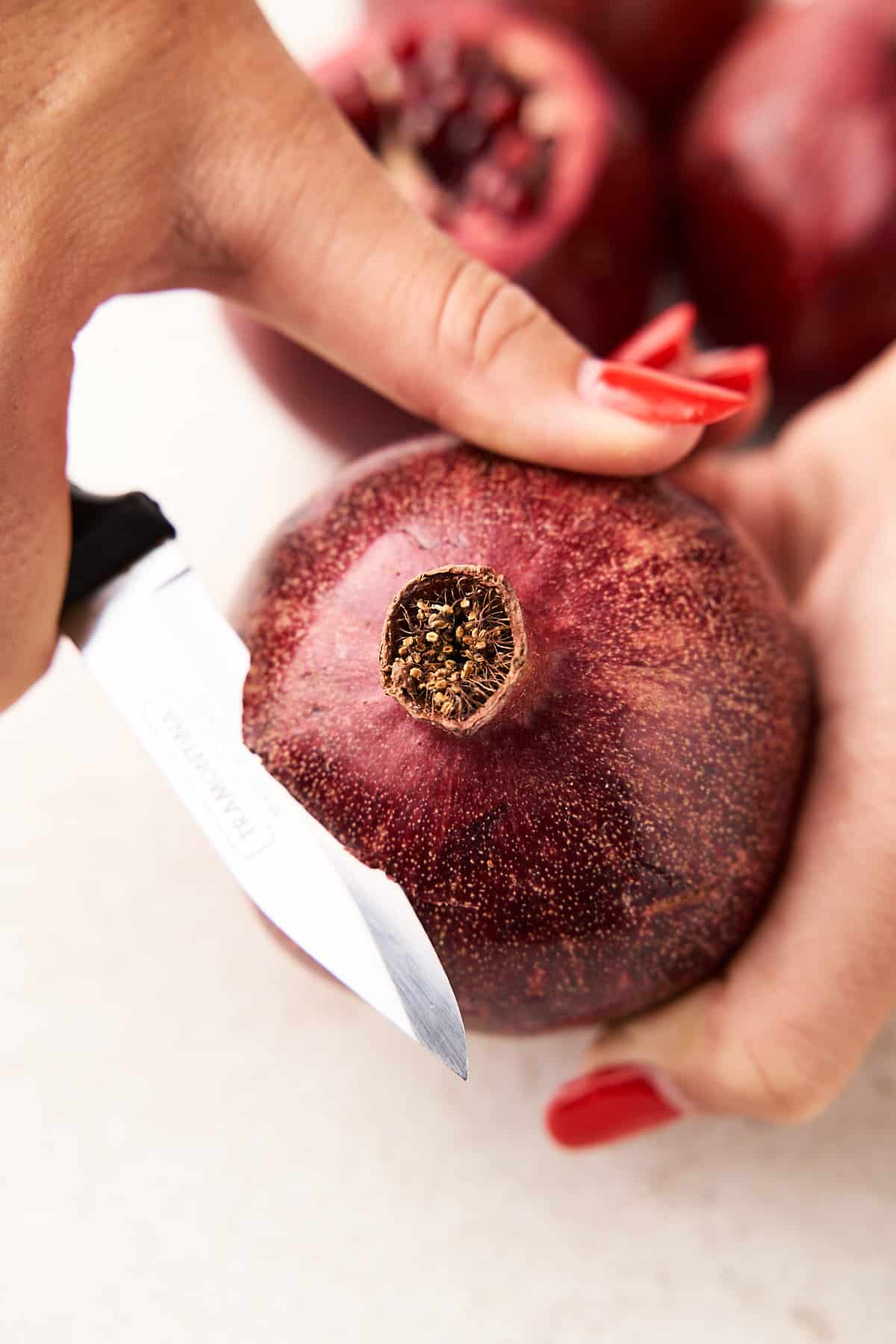
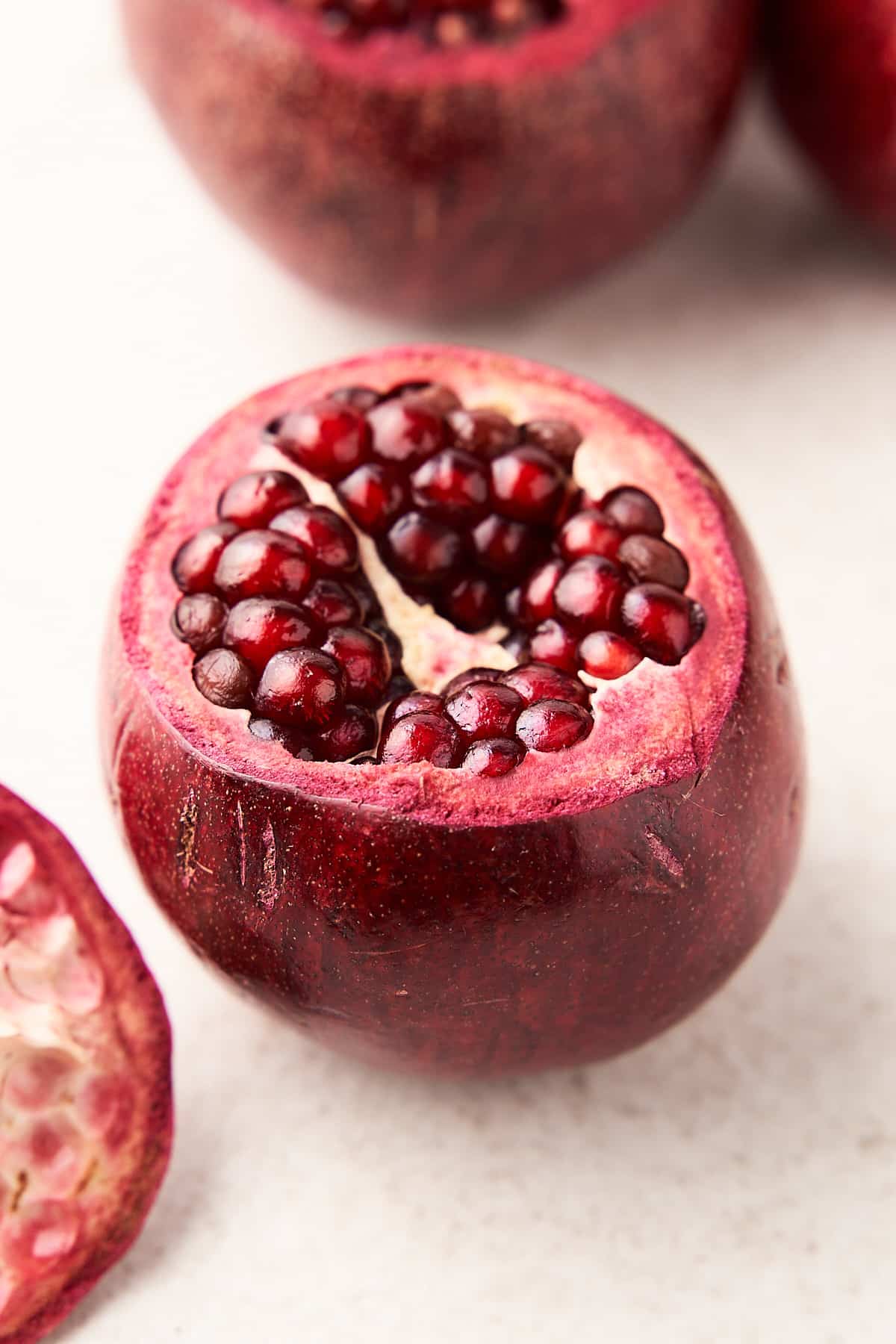
Carefully peel the top of the pomegranate back to reveal the seeds underneath. You don’t want to cut too deep as you will pierce the arils.
Slice the sections
Have a feel of the pomegranate to check for the ridges, then look at it top down to find the white portions that divide the fruit into sections. Depending on how large the fruit is, you should be able to find about 4-6 sections.
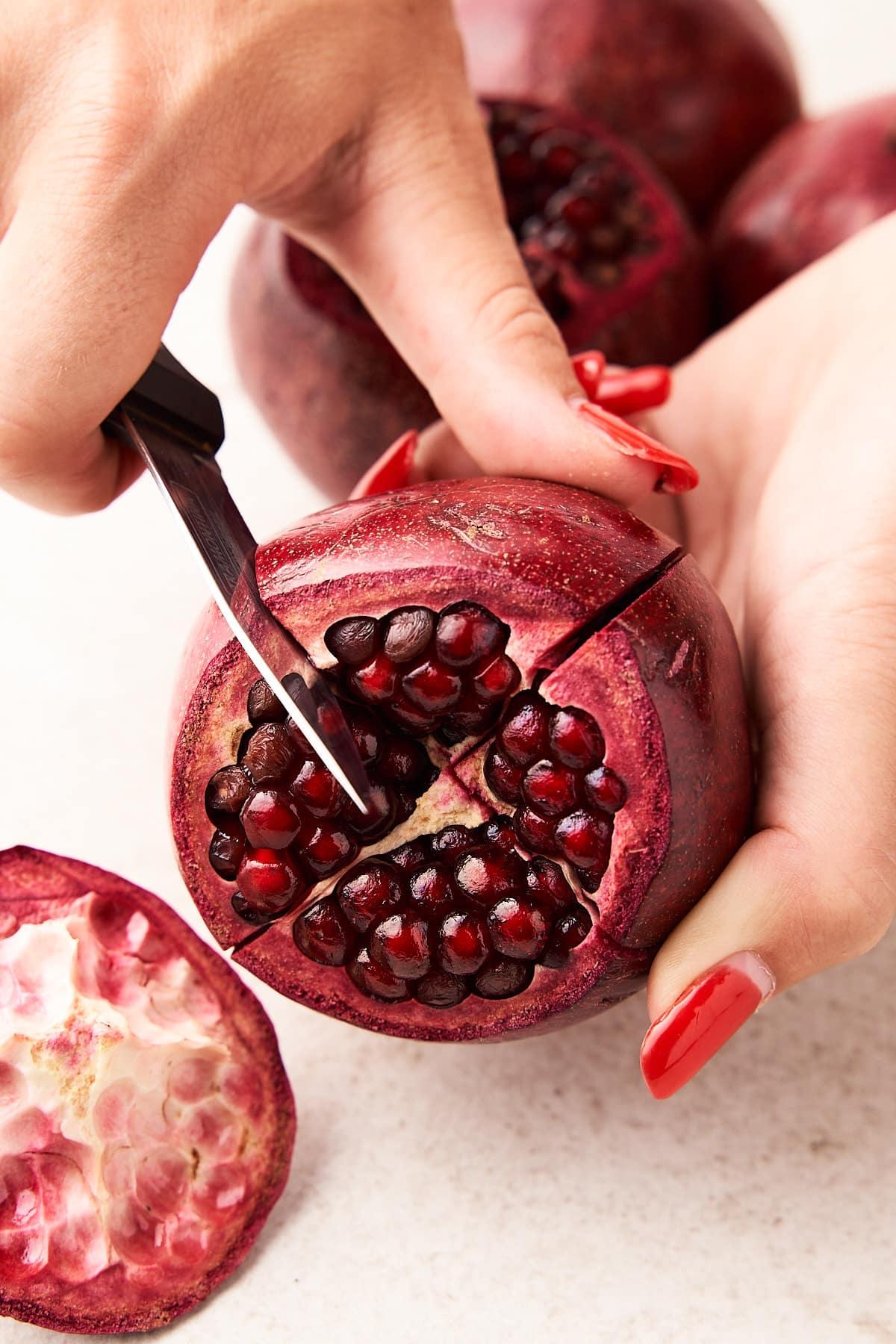
Starting at the top end, make shallow cuts down to the bottom along the white portions. Again, be careful not to cut too deep or you will pierce the arils and spill the juice!
Separate the sections
Hold the pomegranate in your hands and gently pull it apart to separate each section, revealing the seeds inside.
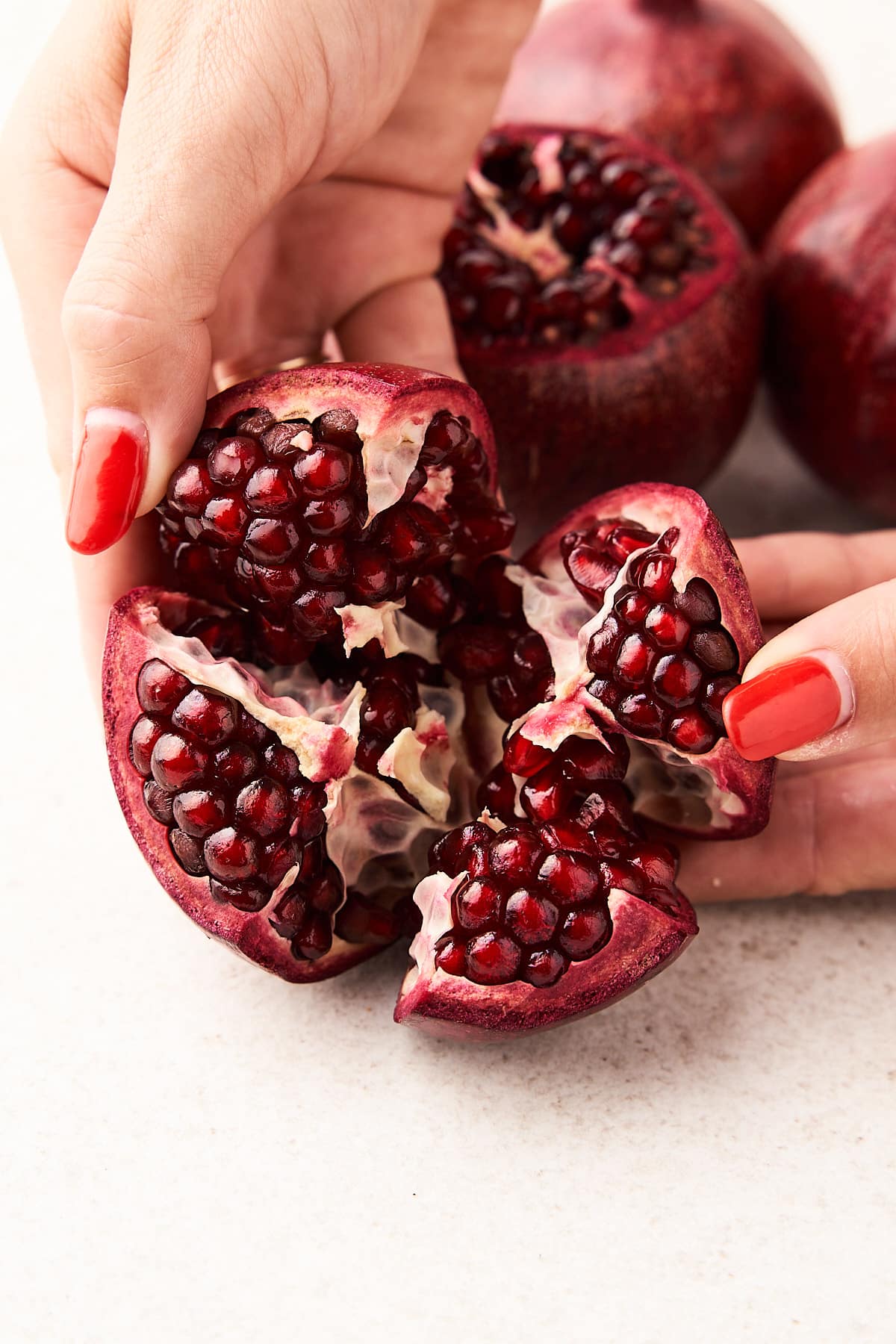
Remove the arils
Turn the pomegranate upside down over a large bowl, and gently hit the bottom with a wooden spoon. You can also use your fingers to reach arils that are not dislodging. (Alternatively for even less mess, hold each piece under water and work the arils out with your fingers.)
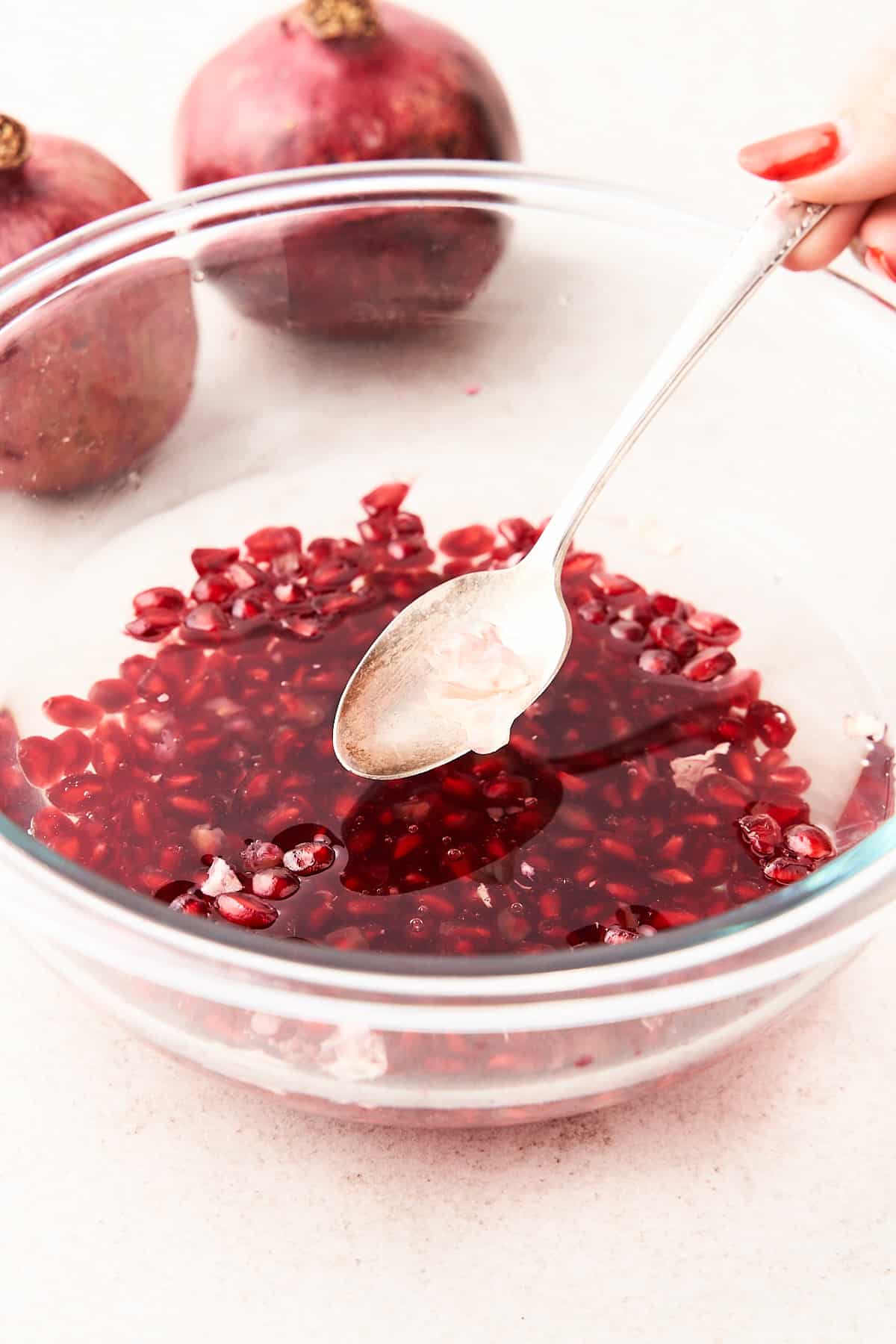
Rinse and drain
Fill the bowl with water, and the white pieces will float to the top while the seeds stay at the bottom. Scoop the membranes off with a spoon and discard them.
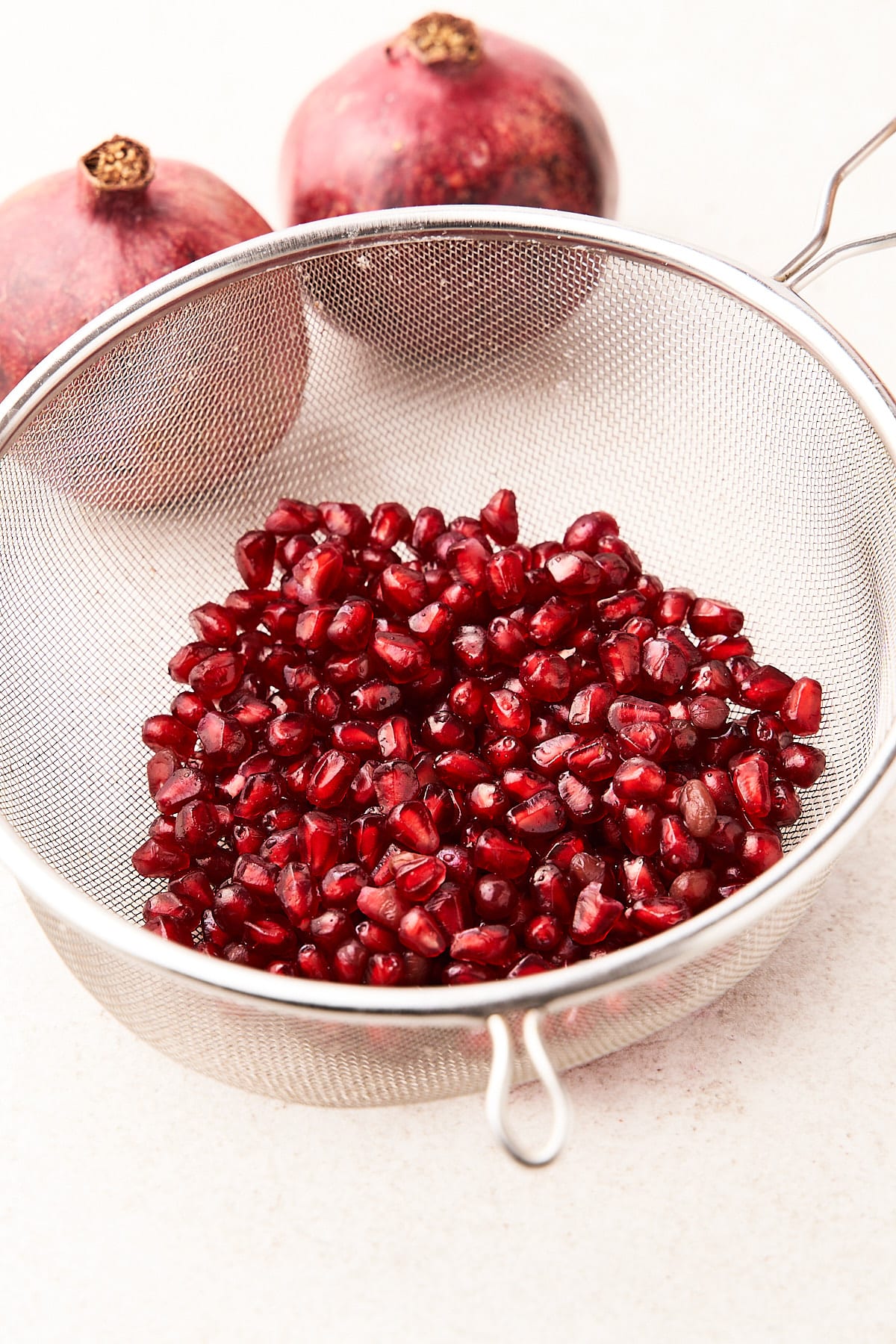
Drain the pomegranate seeds in a colander or mesh strainer. Enjoy them as a snack on their own, or add them to recipes like salads, oatmeal, yogurt bowls, and smoothies.
Tips for cutting a pomegranate
When it comes to pomegranates, there are just a few tips and tricks to keeping the juice off of your clothes and in your recipes. Keep the following pointers in mind:
- Don’t cut too deep: To prevent bursting the seeds and spilling all of the delicious juice, don’t cut into the pomegranate too deep. You will feel much less resistance once you make it through the skin, so don’t go any further. Save that juice for snacking!
- Avoid light clothing: This sounds like a funny tip, but pomegranate juice stains are no joke! Do yourself a favor and wear an apron (or at least old clothes)! Some people even like to bang the fruit while it’s submerged in a bowl of water.
- Use a sharp knife: Whether you use a paring knife or a utility knife, just make sure it’s sharp. It will make getting through the skin much easier!
How to pick a perfect pomegranate
After spending your hard earned money, the last thing you want is to open up a mushy or moldy pomegranate. With these tips in mind, you’ll be able to pick a perfect pomegranate with your eyes closed:
- Color: Depending on the variety, the color of pomegranates can range from light green to pink and red. In general, you want to pick dark pink and red pomegranates.
- Weight: Pomegranates should feel heavy for their size, meaning it’s full of juicy arils. Pick each fruit up and compare it to the others before making your decision.
- Firmness: You want the skin to feel firm and smooth. Avoid pomegranates with any soft spots, gashes, or brown spots. These are overripe and will go bad much quicker.
- Shape: Choose pomegranates that are ridged with somewhat flat sides. Try to avoid perfectly spherical shapes.
Storing
If you find yourself with extra pomegranates, follow these simple storage instructions:
- Fridge: Once removed, place the pomegranate seeds in an airtight container and store them for up to 6-7 days in the fridge. You’ll know they’re not fresh anymore if they develop a slimy film on them.
- Freezer: If you won’t eat them in time, consider freezing your pomegranate seeds. Just transfer them to a freezer-safe bag or container, and they’ll store for up to a year this way.
Note: Whole pomegranates can be stored at room temperature for up to 2 weeks and in the fridge for about a month.
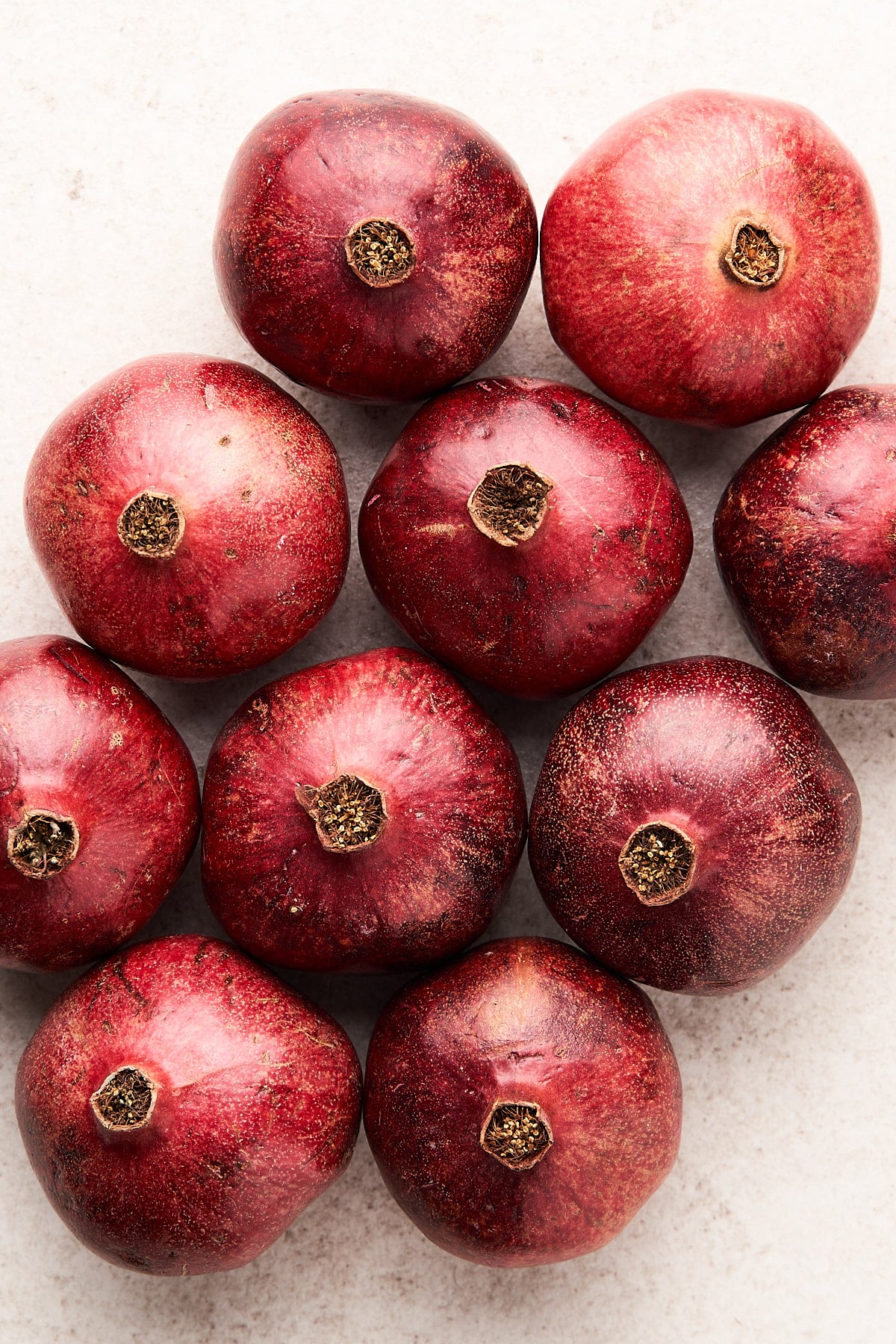
What to do with pomegranate
Pomegranates are one of the most versatile fruits out there! Add the seeds to both sweet and savory recipes alike. Here are a few ideas to get your creative juices flowing:
- Pomegranate Holiday Sangria
- Bulgar Salad with Feta and Pomegranate
- Strawberry Pomegranate Smoothie
- Fall Salad with Pomegranate Vinaigrette
- Orange Pomegranate Pull Apart Bread
Pomegranate FAQs
Although you can eat the skin of a pomegranate, it’s not recommended. Pomegranate skin is tough, leathery, and quite bitter.
Yes, you can eat the pomegranate seed, which is encased in the aril (the juice-filled sac). Some people prefer spitting out the seed once the juice is gone, but it’s entirely up to you.
Yes, there are many types of pomegranates that come in different shapes and colors ranging from red, pink, orange, green, and yellow.
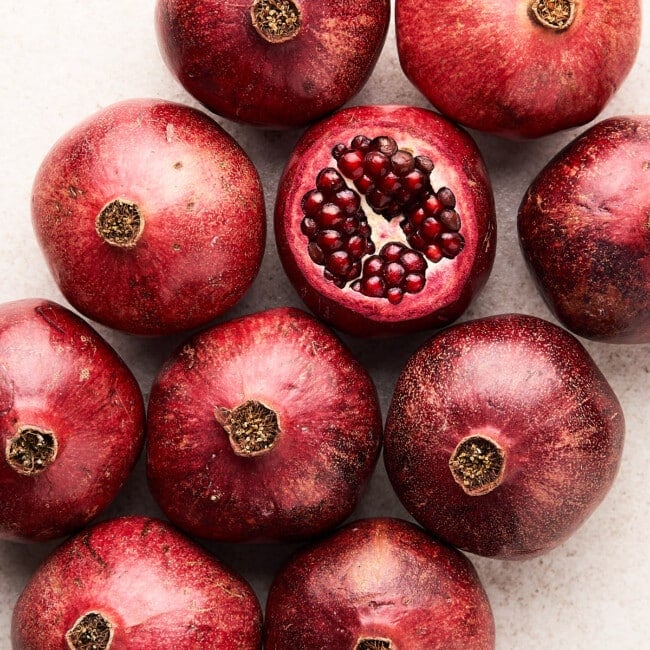
Ingredients
- 1 pomegranate
Instructions
- Remove Top: Hold the pomegranate in the palm of your hand with the blossom end facing up. With a paring knife, make a shallow cut, about ½-inch below the top, in a circular motion all the way around. Carefully peel the top of the pomegranate back to reveal the seeds underneath. You don’t want to cut too deep as you will pierce the arils.
- Score: Have a feel of the pomegranate to check for the ridges, then look at it top down to find the white portions that divide the fruit into sections. Starting at the top end, make shallow cuts down to the bottom along the white portions.
- Open: Hold the pomegranate in your hands and gently pull it apart to separate each section, revealing the seeds inside.
- Deseed: Turn the pomegranate upside down over a large bowl, and gently hit the bottom with a wooden spoon. You can also use your fingers to reach arils that are not dislodging. (Alternatively for even less mess, hold each piece under water and work the arils out with your fingers.)
- Remove Membranes: Fill the bowl with water, and the white pieces will float to the top while the seeds stay at the bottom. Scoop the membranes off with a spoon and discard them.
- Drain: Drain the pomegranate seeds in a colander or mesh strainer. Enjoy them as a snack on their own, or add them to recipes like salads, oatmeal, yogurt bowls, and smoothies.
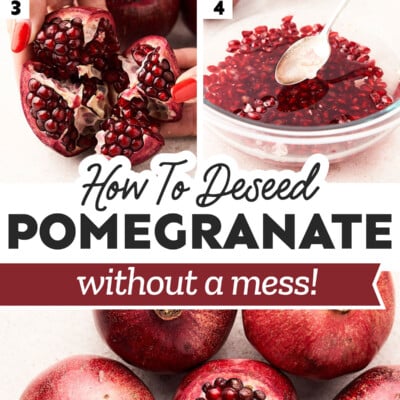
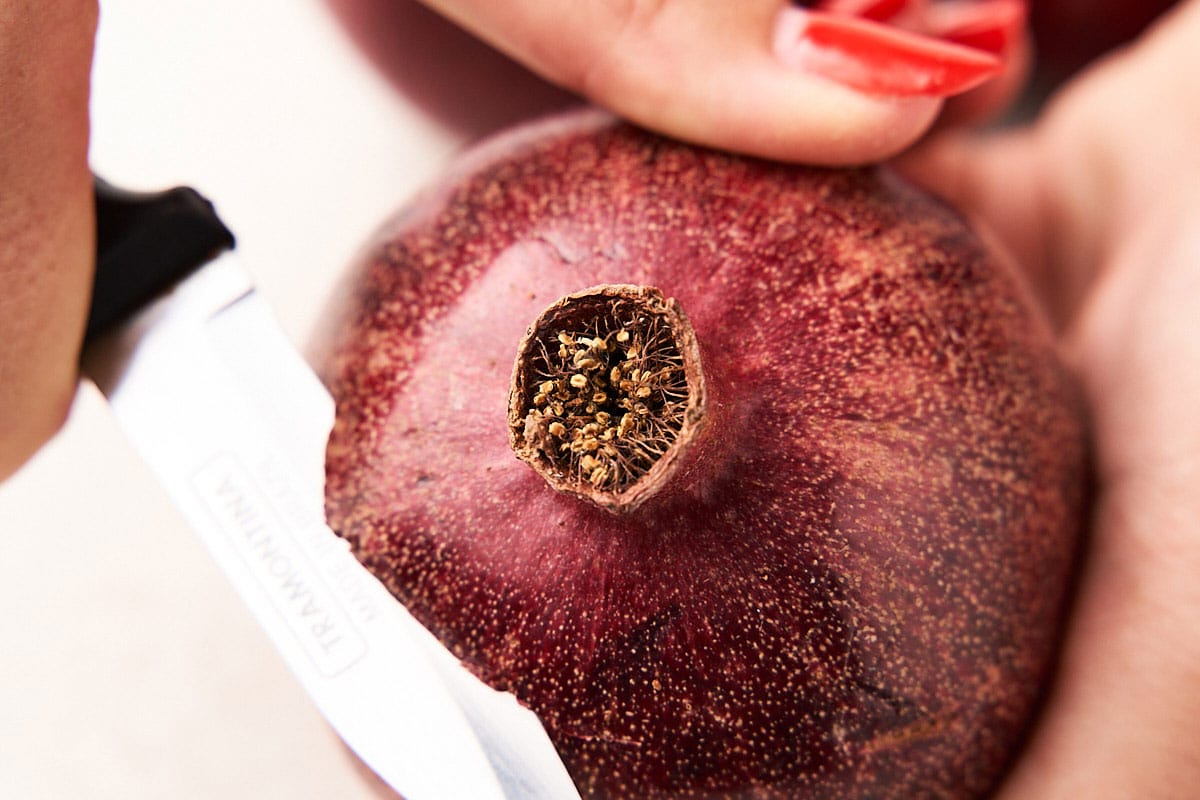
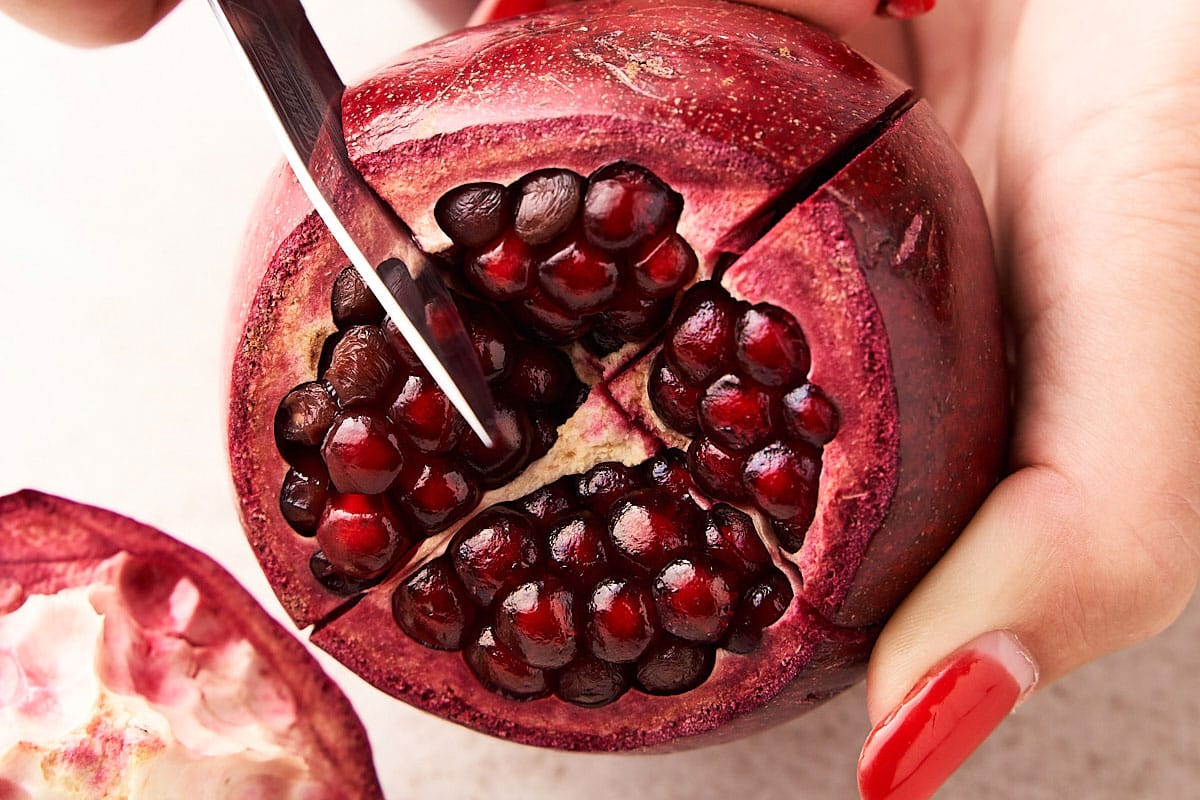
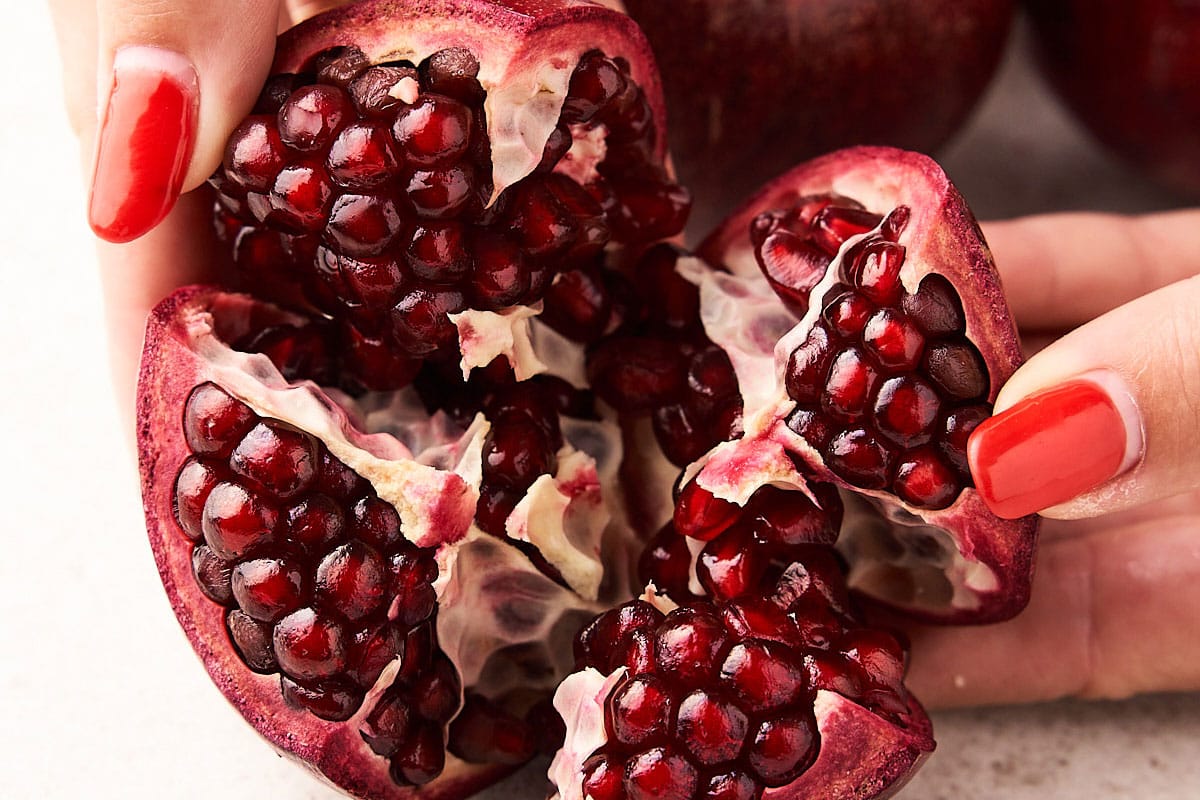
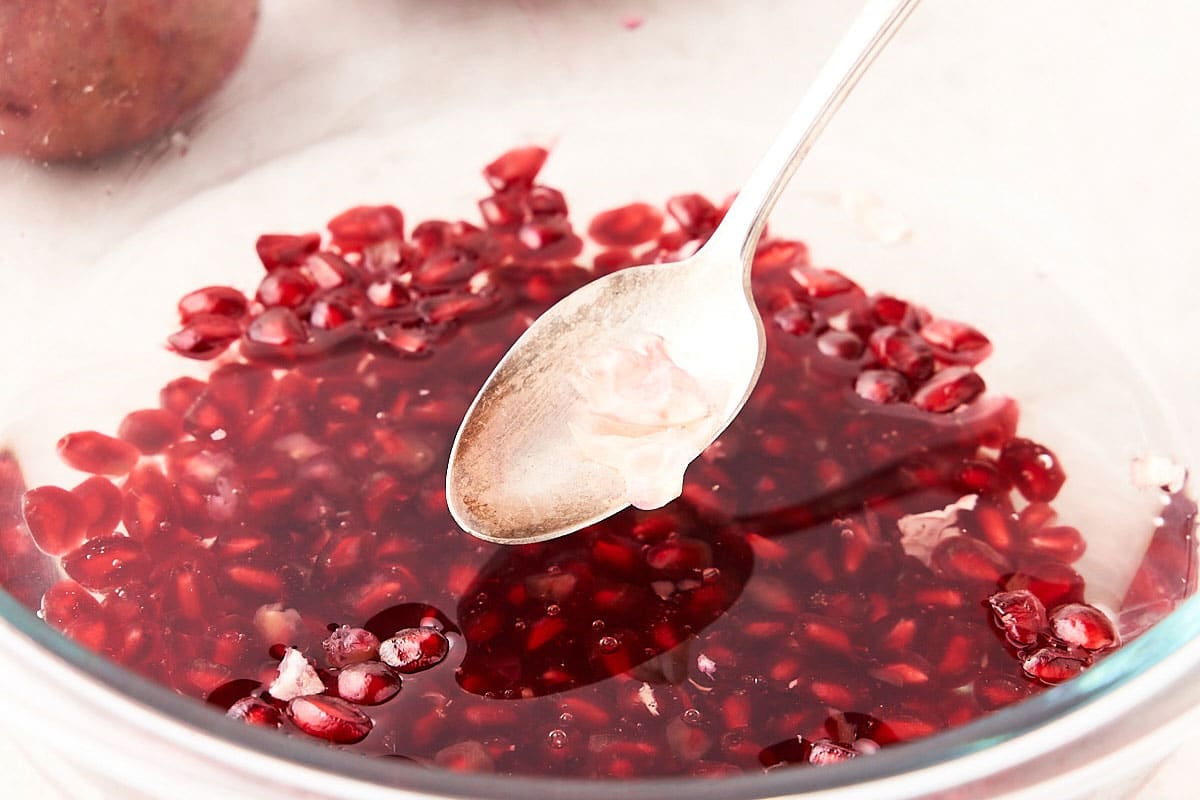
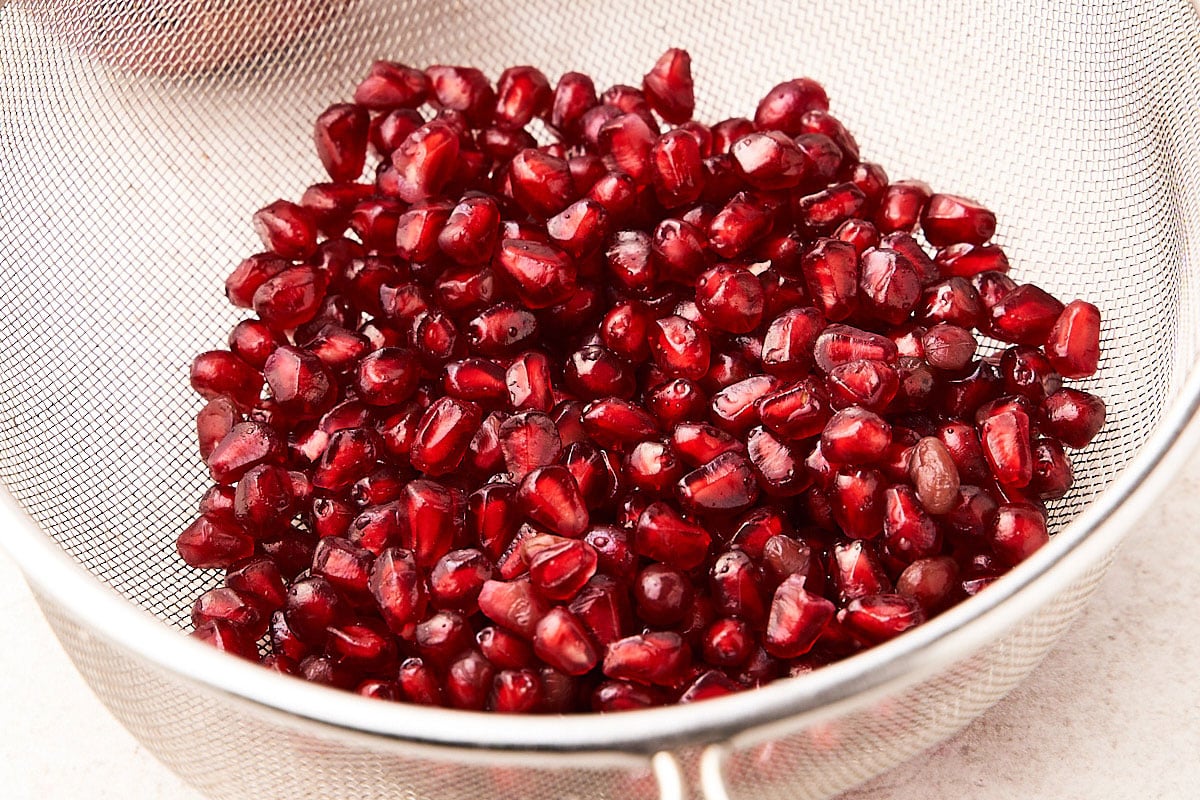
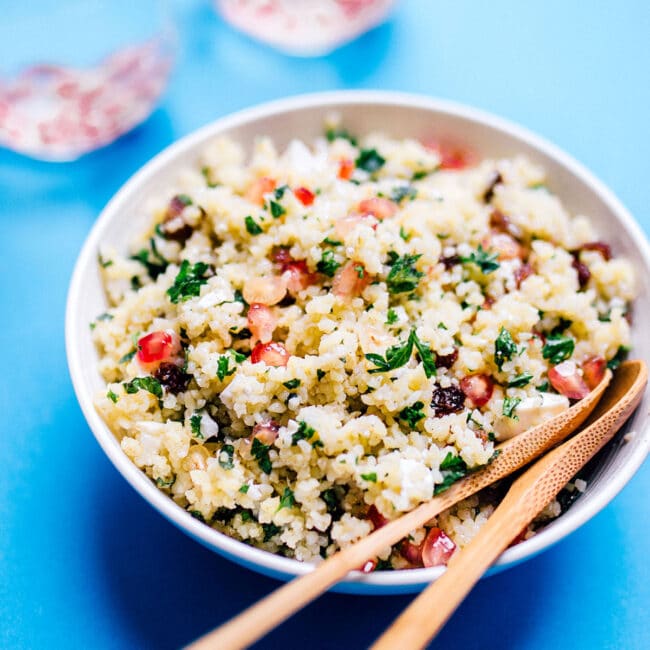
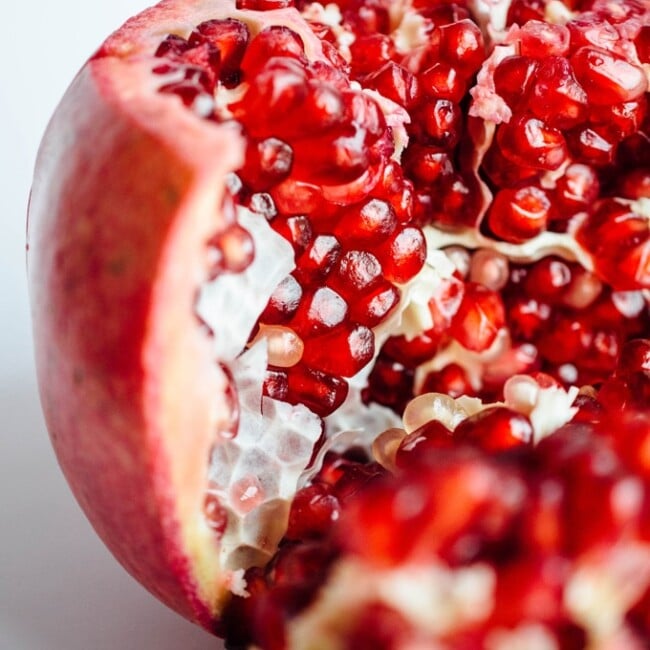


Leave a Comment